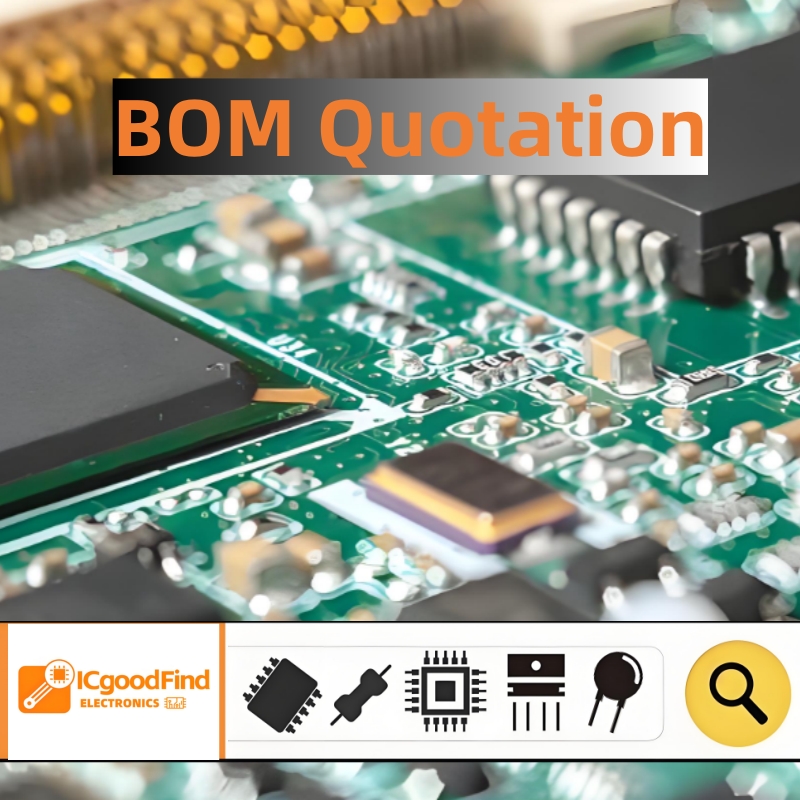**High-Speed Data Acquisition System Design Using the AD9212BCPZ-40 10-Bit, 40 MSPS ADC**
The design of a high-speed data acquisition (DAQ) system is a critical task in numerous applications, including communications, medical imaging, and industrial instrumentation. At the heart of such systems lies the analog-to-digital converter (ADC), whose performance dictates the overall fidelity and speed of the signal chain. This article explores the key design considerations and implementation strategies for a DAQ system utilizing the **AD9212BCPZ-40**, a high-performance 10-bit, 40 MSPS ADC from Analog Devices.
The selection of the AD9212BCPZ-40 is often driven by its excellent balance of speed, resolution, and power consumption. Its **40 MSPS sampling rate** enables the capture of high-frequency signals, making it suitable for applications like software-defined radio (SDR) or ultrasound beamforming. The 10-bit resolution provides sufficient dynamic range for many medium-precision applications. A fundamental advantage of this ADC is its **low power consumption**, typically 40 mW at 40 MSPS, which is crucial for portable or multi-channel systems where thermal management is a concern.
A robust DAQ design extends far beyond the ADC itself. The performance of the entire system is highly dependent on the preceding analog signal conditioning circuitry. The driver amplifier must possess adequate **slew rate and bandwidth** to settle within the ADC's acquisition time without introducing distortion. For the AD9212, which features a differential input, using a dedicated differential amplifier or a transformer-coupled design is essential to maximize performance, reject common-mode noise, and minimize even-order harmonics. The amplifier must be selected to have a noise floor lower than that of the ADC to prevent degradation of the overall signal-to-noise ratio (SNR).

Equally critical is the design of the clocking circuitry. The ADC's dynamic performance is highly sensitive to the quality of the sampling clock. **A low-jitter clock source is paramount** to achieving the specified SNR and ENOB (Effective Number of Bits) performance. Any jitter on the clock signal directly translates into aperture uncertainty, which adds noise and degrades the system's ability to resolve high-frequency inputs. Therefore, employing a stable crystal oscillator or a dedicated low-jitter clock generator is a non-negotiable aspect of the design.
The digital interface of the AD9212BCPZ-40, which outputs data on a single 10-bit bus, must be properly managed. The captured data must be synchronized and transmitted to processing logic, typically an FPGA or a microcontroller. The FPGA must be configured to latch the data on the correct edge of the ADC's data clock (DCO). Implementing **first-in-first-out (FIFO) buffers** within the FPGA is a common technique to handle the high-speed data stream and mitigate potential timing issues between the ADC and the downstream processor.
Finally, a meticulous approach to **printed circuit board (PCB) layout** is required to realize the full potential of a high-speed ADC. This entails using a multilayer board with dedicated ground and power planes. The analog and digital sections should be partitioned, and the power supplies must be well-decoupled using a combination of bulk, tantalum, and ceramic capacitors placed close to the ADC's supply pins. The clock and input signal traces should be treated as controlled-impedance transmission lines and kept away from noisy digital lines.
**ICGOODFIND:** This analysis confirms that successfully deploying the AD9212BCPZ-40 in a high-speed DAQ system requires a holistic approach. The ADC's core capabilities can only be fully leveraged through careful attention to the analog front-end design, a ultra-low-jitter clock source, robust digital data handling, and a PCB layout that prioritizes signal integrity and power integrity.
**Keywords:** Data Acquisition System, AD9212BCPZ-40, Clock Jitter, Signal Integrity, Differential Amplifier.
